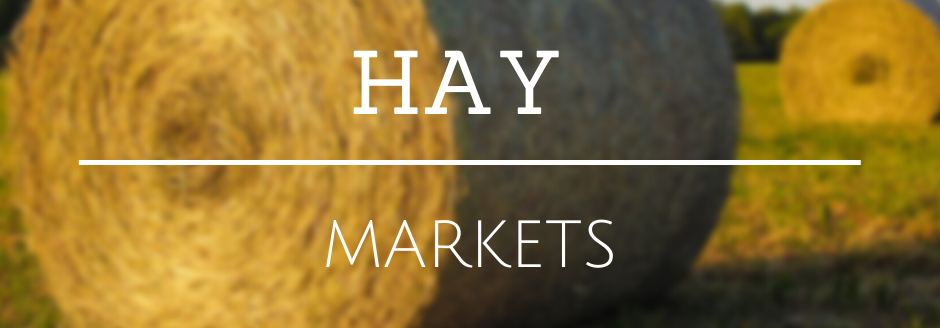Colorado—In the Sept. 21 report, compared to last report, trade activity and demand light. Corn silage harvest is in full swing, reducing trade activity on new hay. Buyers in the northern part of the state have reduced bid offers on alfalfa hay during silage harvest until they can assess their feed stockpiles for the rest of the year. Recent weather conditions have allowed growers to greatly improve the quality of hay put up for second and third cutting alfalfa. Growers are reporting an increase in acres of forage sorghums, triticale, forage wheats, and golden german millet to increase feed stockpiles this year. According to the NASS Colorado Crop Progress report for week ending Sept. 17, alfalfa hay third cutting is 70% complete; fourth cutting is 9% complete.
Missouri—In the Sept. 21 report, compared to last report, hay prices are steady. The overall supply of hay is light to moderate and demand is moderate. Another week of mostly dry weather around the state, although some measurable rainfall was reported in southwest and south central parts of the state. Haying has slowed down quite a bit now as many have baled what they had for a fall harvest and those in grain areas have turned attention to combines and parked hay equipment.
Nebraska—In the Sept. 21 report, compared to last report, alfalfa hay sold steady to weak. Grass hay sold steady to $15 lower. Ground and delivered hay in the Platte Valley sold steady with a sharply lower price noted in the western side of the state. Dehydrated alfalfa pellets sold steady. There has been some hay traded, but on a whole demand is rather bleak for this time of year. Most contacts stated they have more people wanting to sell hay than buy at this time. It is a wait and see strategy now. Many prospective buyers are hoping the hay market continues to slip downward and there is a good change that it might. The top quality and put up without any rain alfalfa still holding firm. Especially, if it is dairy or horse quality hay.
Oklahoma—In the Sept. 15 report, compared to the last report, hay is slow to steady. Very little movement across Oklahoma. The state did receive some rainfall throughout most of the state, but we still need some widespread rain as we head into our fall season. Next report will be released Sept. 29.
Texas—In the Sept. 22 report, compared to the last report, hay prices are mostly steady across the majority of the regions with quality being the largest determinant on price. Hay supplies are most likely going to be short again this year due to lack of moisture during the growing season and excessive heat. Buyer demand is high due to deteriorating range conditions. According to USDA reports, topsoil moisture is short or very short across 59% of Texas and 67% of the subsoil moisture is short to very short. More than 71% of the pasture and rangeland is in poor to very poor condition in Texas. Next report will be released Oct. 6.
South Dakota—In the Sept. 22 report, compared to last report, alfalfa hay steady to weak. Moderate demand remains for alfalfa as producers are trying to cheapen up on their rations where they can. Good demand for grass hay as calves will be arriving in feedyard pens and need high quality, long stemmed hay to get them coming to the bunk. Some producers finished up their fourth alfalfa cutting this last week.
New Mexico—In the Sept. 22 report, compared to last report, alfalfa hay steady. Trade active, demand good. Alfalfa hay is at 86% finished with third cutting, most producers 62% complete with fourth cutting and starting fifth cutting , The northern part of the state is in the third cutting. Some parts of the state have received scattered showers. Hay and roughage supplies were reported as 19% very short, 46% short, 34% adequate and 1% surplus. Stock water supplies were reported as 17% very short, 36% short, 45% adequate, and 2% surplus.
Wyoming—In the Sept. 21 report, compared to last report, most lots of alfalfa sold unevenly steady. Sun cured alfalfa pellets sold $20 lower. Most buyers are cherry picking the producer and buying the non-rained on and higher testing hay. Report shows that as the hay over $200 per ton is high testing and going to dairies in Colorado. Some of the lower testing hay is headed to the ranch or feedlot. Demand is mostly light as there has been a lot of hay produced in the state this year. Some hay is being imported in from states to the west of Wyoming. Most producers are on third cutting in the Eastern areas and on second cutting in the west. Some producers are shooting for one more cutting of forage before cleaning equipment for winter storage.
Montana—In the Sept. 22 report, compared to last report, light to no sales for the week with little demand for hay.

